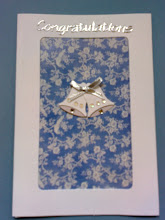This novel follows on from Daughter of the Forest and picks up the story of the story of Sorcha’s children. Niamh the beautiful daughter expected to marry well to forge an alliance, Sean, the son destined to rule Sevenwaters and his twin, earthy Liadan, a healer like her mother Sorcha but also a seer of the future. Sorcha takes a back seat in this part of the story and we feel her fading away throughout, which is in contrast to her strength in the first book.
The six brothers of the earlier novel have each gone their way, two dead fighting Britons, another become a Druid, the eldest ruling Sevenwaters, the youngest travelling the world seeking adventure and one hiding in the shadows of the forest, a swan’s wing in place of one arm to remind him of the sorceress’s curse.
Early in the book, an ally of Sevenwaters is attacked by a mysterious band of ruthless strangers with painted bodies and costumes which make them look like animals. Their leader is known as the Painted Man.
The book also begins with a love affair between Niamh and a young druid which is discovered and banned, with her being sent away in disgrace to marry a cruel aristocrat so that Sevenwaters could gain an alliance and protect its borders. This sits strangely with the previous gentleness of Niamh’s parents, Sorcha and Red, indicating that there is more to this than is evident. Liadan is sent to accompany the distraught Liadan and finds herself abducted by some of the Painted Man’s fighting men. She is taken to treat an injured man belonging to the group and finds herself face to face with the mysterious Painted Man.
The story continues with conflict between the various groups and armies with Liadan caught up in the bargaining and fighting at various turns. As the story unfolds, characters from the previous book are drawn in and events from the previous book brought up again and the consequences of previous stories made clear.
After Daughter of the Forest, which I enjoyed immensely, I looked forward to this book. On reading it however, I did not find the storyline quite as engrossing. The main characters were well-drawn and we sympathise with them, but again one of the villains was predictable – Niamh’s husband, Lord Fionn, whereas the other, Eamonn of the Marshes is less so. Although I did enjoy this book, it didn’t leave me as keen to read the last part as the first part did and at times did feel as if it was just a bridge to carry through the story to its conclusion in the third book. That said, I still enjoyed the Celtic folk stories woven throughout the book, the mysterious atmosphere created by them and the unfolding of the story of the Painted Man.
The six brothers of the earlier novel have each gone their way, two dead fighting Britons, another become a Druid, the eldest ruling Sevenwaters, the youngest travelling the world seeking adventure and one hiding in the shadows of the forest, a swan’s wing in place of one arm to remind him of the sorceress’s curse.
Early in the book, an ally of Sevenwaters is attacked by a mysterious band of ruthless strangers with painted bodies and costumes which make them look like animals. Their leader is known as the Painted Man.
The book also begins with a love affair between Niamh and a young druid which is discovered and banned, with her being sent away in disgrace to marry a cruel aristocrat so that Sevenwaters could gain an alliance and protect its borders. This sits strangely with the previous gentleness of Niamh’s parents, Sorcha and Red, indicating that there is more to this than is evident. Liadan is sent to accompany the distraught Liadan and finds herself abducted by some of the Painted Man’s fighting men. She is taken to treat an injured man belonging to the group and finds herself face to face with the mysterious Painted Man.
The story continues with conflict between the various groups and armies with Liadan caught up in the bargaining and fighting at various turns. As the story unfolds, characters from the previous book are drawn in and events from the previous book brought up again and the consequences of previous stories made clear.
After Daughter of the Forest, which I enjoyed immensely, I looked forward to this book. On reading it however, I did not find the storyline quite as engrossing. The main characters were well-drawn and we sympathise with them, but again one of the villains was predictable – Niamh’s husband, Lord Fionn, whereas the other, Eamonn of the Marshes is less so. Although I did enjoy this book, it didn’t leave me as keen to read the last part as the first part did and at times did feel as if it was just a bridge to carry through the story to its conclusion in the third book. That said, I still enjoyed the Celtic folk stories woven throughout the book, the mysterious atmosphere created by them and the unfolding of the story of the Painted Man.
































I forwarded your reviews to my sister - these sound just up her alley - shukran for sharing :-)
ReplyDeleteAssalam-alaikam Sister Washi,
ReplyDeleteI'm glad you found the reviews useful. The review for the last book is to follow shortly (I'm halfway through it). If she likes fantasy/folk stories/historical novels, she'd like this.
I have started The Book Thief, but it's sitting on my bedside table until after I finish a few other books I started.